“Hear me Roar!”—House Lannister
Would you like to improve your kettlebell snatch technique and make your snatch test easier? The simple tip I’m about to share with you will help you to generate more force from the ground up, improve and solidify your overhead lockout, help you maintain a vertical plank during the drop and tighten up your overall timing and rhythm.
Interestingly enough, this tip doesn’t involve the kettlebell hand, but rather the free/non-lifting hand. My ongoing research dedicated to the use of this hand first revealed the “kettlebell pull press” with which many SFGs (as well as dumbbell lifters) experienced a greatly improved press. Today’s tip is dedicated to improving your kettlebell snatch using the non-lifting hand in what I call the Lion’s Roar Snatch.
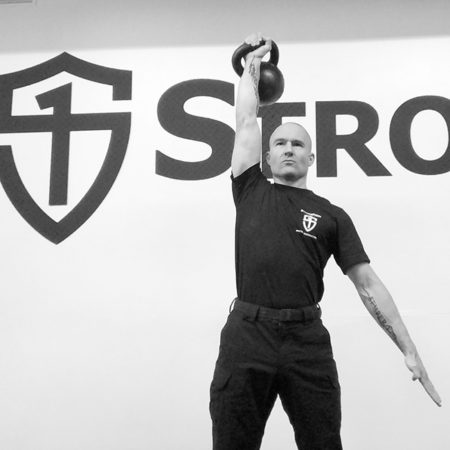
As with the pull press, the technique that I am going to explain is not something I discovered, but something I noticed, deconstructed, and reverse engineered after judging hundreds and hundreds of snatch tests, and of course reviewing my own kettlebell snatch practice sessions. Many of you are likely doing this unconsciously to varying degrees, but I want to teach you to do it by design in a specific way and hence reap even more benefits.
But first…
How I (Almost) Failed a Kettlebell Snatch Test…with a 16kg Kettlebell
I was getting ready for my StrongFirst Level I Kettlebell Certification years ago. With nine months left to prepare I still could not comfortably snatch the 24kg, my testing weight. To have at least some baseline, I decided to try the test with a 16kg. Well, I did it. But it sucked. Big time. I could not help but think, “How the hell am I going to make it with the 24kg? At a bodyweight of 66.6kg?”
At that time there were no certified instructors in my country. There were no kettlebell courses either. I spent the next nine months doing lots of online research, practice, asking questions on online forums, more practice, sending emails to various instructors, polishing my technique, incorporating any tip I could find, and more and more practice.
Lo and behold, when the time came, I finished my snatch test with the 24kg at about 4:20.
A few years later, when beta testing a training protocol for one of my upcoming projects, I finished the cycle comfortably snatching the 32kg. I had gained some weight, true but I had only moved up to 68kg bodyweight. And I got ripped! The kettlebell snatch truly is a Tsar of all kettlebell lifts.
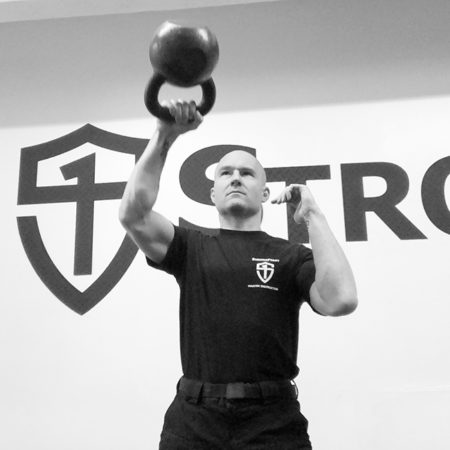
Four Noble Truths of the Snatch Test
During my kettlebell snatch journey, I came to the following enlightening conclusions:
- The snatch test is glycolytic suffering, but it doesn’t have to be. It can be way easier.
- The reason why you suffer during your snatch test is your technique sucks.
- If you want to ace your snatch test, perfect your snatch technique.
- The route to correct kettlebell snatch technique is an eightfold path:
- Deep hip hinge and backswing.
- Generating the force from your legs and hips.
- Keeping the bell close to your body—both on the way up and on the way down.
- Keeping the kettlebell on the center line.
- Fast spear through the handle at about your eyes level to avoid banging the forearm. (Earlier than most people do.)
- Playing the game of chicken with the bell on the way down (waiting for the bell in the “vertical plank”).
- Correct breathing (and there are few different models to choose from).
- Optimal coordination of your free arm in all major phases and Lion’s Roar Lockout.
All clear, right? Wait a minute… 8. Lion’s Roar Lockout?
I will explain. Watch the video below and then read some additional info and summary.
One Hand to the Sky, the Other to the Earth
Why is it called “Lion’s Roar”? According to legend, one of the styles of martial arts I practice, Cantonese style “Knight-Errant’s Boxing” (Hap Kyun), originally comes from a Tibetan combat art called “Lion’s Roar” (Si Ji Hau). My teacher and good friend Sifu David Rogers told me that the original name reflects a story from Buddhist scriptures. It is said that upon his birth, Buddha stood up, pointed one hand to the sky, the other hand to the earth, and roared like a lion to announce his arrival. That’s the story behind the cool name. (Oh, and by the way, part of Czechia’s coat of arms is a lion, signifying our nation’s power and sovereignty.)
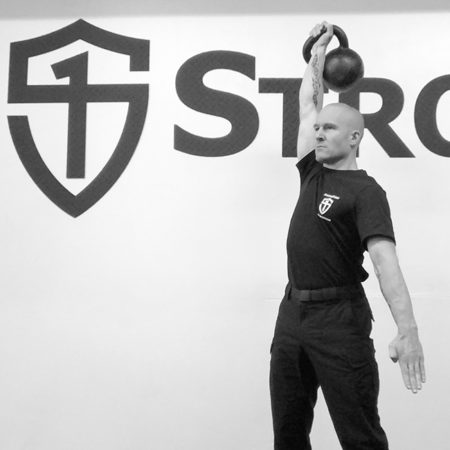
Summary of the Free Hand Action and Benefits
By now you have watched the video, hopefully multiple times, and tried the Lion’s Roar kettlebell snatch technique. Here is a quick summary of the skill and its benefits:
- The arm swing of the free hand on the way up will help you to generate more force from the ground up, just like in high jump.
- Pointing the non-kettlebell hand to the floor will help you with fixing the kettlebell overhead and proper and solid lockout.
- Swinging the free arm up before or during the drop will help you to maintain vertical plank during the drop, so you will not hinge too early.
- And finally, the whole free hand action will help you with overall timing and maintaining the rhythm, which is crucial during your snatch practice and, of course, the snatch test.
It may take time to get used to it. It certainly took me some time on my left side in particular. But it is worth it. Practice first without the kettlebell, then with a light kettlebell. Always pause at the top. In contrast to the swing, the snatch has the advantage that you can stop at the top, give yourself a mental reminder what to do next, execute the plan, and then repeat. Do sets of five to ten snatches but think each of rep as a single.
Your Next Snatch Test
…97, 98, 99, 100! Great job!
Meowing time is over, it is time to ROAR! Try it and let me know in the comments how it goes.

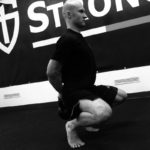
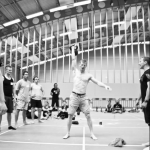
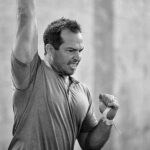







Thank you Pavel 🙂
I tried this technique – it took a little to get the coordination down, but the snatches feel way easier. One question though: would this snatch technique be acceptable during the SFG I certification? The vids for the testing standard (I am assuming it’s still the same from 2018 as I couldn’t find any newer material) show the free hand kept at the side of the body at all times.
Thanks
Nicole
Nicole, thank you for your comment.
Yes, of course – the free hand just can’t touch the body or the kettlebell. Otherwise, you can use it any way you like.
Thank you Pavel M.
I am still learning the snatch and implemented your idea today. It was hard to coordinate the upward hand but I felt immediate benefits to hinging on the drop with the free hand following.
It may take some time, but once you get familiar with it, it makes the snatch way easier. Keep practicing and let me know how it works!
Thanks Pavel. Will incorporate this into my ETK training routine. Hopefully it will bring power to my snatch test
Thank you! Let me know how it goes.
Very grateful indeed for this excellent article and video, Pavel!
Your naming of the Lion’s Roar Lockout is also perfectly apt for Q&D snatching – a great mental cue for channeling some feline power…
Thank you, Duncan! I didn’t realize that the name is perfectly compatible with Q&D cat power – thank you for pointing it out!
Excellent observation and great reverse engineering.
I had noticed with my on practice in the past few months with extensive snatching (Q&D and A&A) that my free arm wanted to point to the ground. It made my snatch feel better – especially the punch at the end.
Reviewing videos, I also saw that I consistently pointed down the left arm when snatching with the right arm, and not so much the right arm when snatching with the left.
Guess what? Measurement shows a constant, regular power output on the right, and a lower erratic power output on the left.
All I have to do now is to adopt the rythm with the free arm that you presented in the video. It makes a lot of sense to me.
Thank you for this simple and effective “do-this” article.
Jean-Francois, “reverse-engineered”, exactly – watching a lot of snatch tests, and doing a lot of snatches.
Thank you for your observations, I am glad the article and video are useful.
Thank You Pavel for this article. Do you have any articles specific to Noble Truth 4.7 (the breathing)?
Live Well & Stay Strong
Gerry, please check out e.g.
https://www.strongfirst.com/the-critical-difference-breathing-can-make-in-the-snatch-test/
https://www.strongfirst.com/how-to-make-your-snatch-test-easier/
Gratitude Pavel
My pleasure, Gerry.
Great article, Pavel! It makes so much sense. I started to apply the same movement pattern of a free hand on the snatch a couple of weeks ago, but struggle a bit with the timing. It helps a great deal with heavier bells. Now after your explanation it’s more clear.
“It may take time to get used to it. It certainly took me some time on my left side in particular.” – Very true for me, it takes time, and I’m struggling with a left side, cross-lateral brain connection to be improved.
Thanks a lot for the article. Plain, simple and efficient, like finest strength.
Thank you, Alexander!